Greetings Photoion students and photography fans. Today we’re talking about a topic that can make even the most experienced photographer filled with dread – rain!
There’s little more frustrating than heading out to capture that image that’s been burned into your mind for days, only to have the weather turn at the last minute and for the rain to ruin your images.
In fact, most people pack away their equipment when the rain starts to fall and wait for it to clear before heading back out to start photographing again.
However, you don’t need to be afraid of taking images in the rain, and a change in the weather doesn’t have to mean the end of a day of photography, even if it means the image you went out to get isn’t possible.
Today we’re going to be looking at some tips for getting the most out of the weather and capturing some fantastic images with rain photography.
Preparation, preparation, preparation!
The key to never feeling like you’ve been caught off guard by a sudden turn in the weather is preparation. Sooner or later in your photographic journey, you are going to encounter rain that you didn’t expect, but if you’re prepared it will barely even slow your shooting down.
When you are capturing images in the rain, the most important thing is keeping yourself and your camera dry.
To keep yourself dry you’ll want a raincoat with a hood – you won’t have free hands to use an umbrella if you’re using the camera. A hat with a peak is also excellent because it adds an extra layer of protection.
Always keep a camera cover in your bag so that if you unexpectedly find yourself caught in the rain your camera will stay dry. In a pinch, you could use a plastic bag with a hole cut for the lens. Just be sure to use an elastic band or some tape to seal the open end and protect the camera body.
Always keep a towel handy to dry your camera body should it get wet, but make sure to only use lens cloths on the lens.
What to shoot
Shoot for the clouds
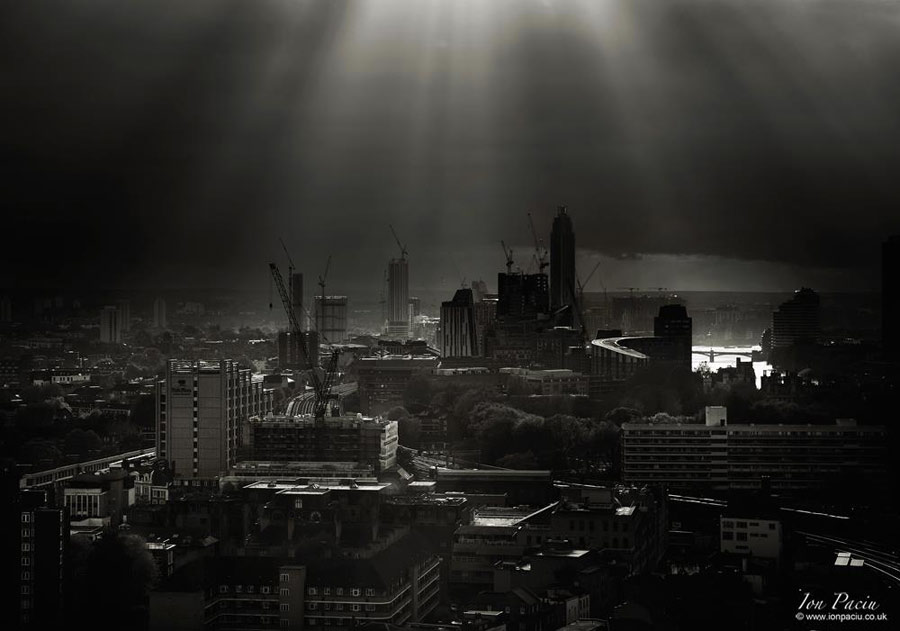
Taken by our tutor (c) Ion Paciu
Clouds are fascinating photography subjects. No two are ever the same and their presence can drastically change the tone of an image.
Cloud formations can enhance the landscape and add drama to your photographs. Sometimes you can get really lucky and catch shafts of light shining through gaps in rain clouds. Obviously with cloud formations you are going to need to be quick as these can change rapidly.
Shoot through windows
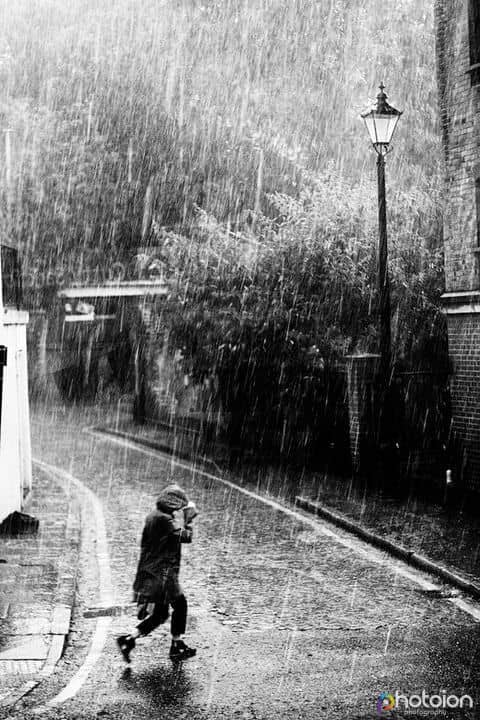
(c) Tatiana Zigar, image taken through a window
By capturing your images through a window, you keep you and your camera dry. There are a number of techniques that can potentially help you to eliminate reflections such as using a lens skirt, getting as close to the window as possible and using a polarising filter.
Embrace water droplets
If you keep the window closed, you can take full advantage of the water droplets and condensation on the glass. Water droplets will have tiny reflections in them that can make amazing images on their own with the right lens. Or if you are in view of an iconic location, you can use the distortion of the water droplets to create an interesting perspective on a well-known landmark or tell a story like Steve McCurry did in the iconic image above.
Shoot puddles
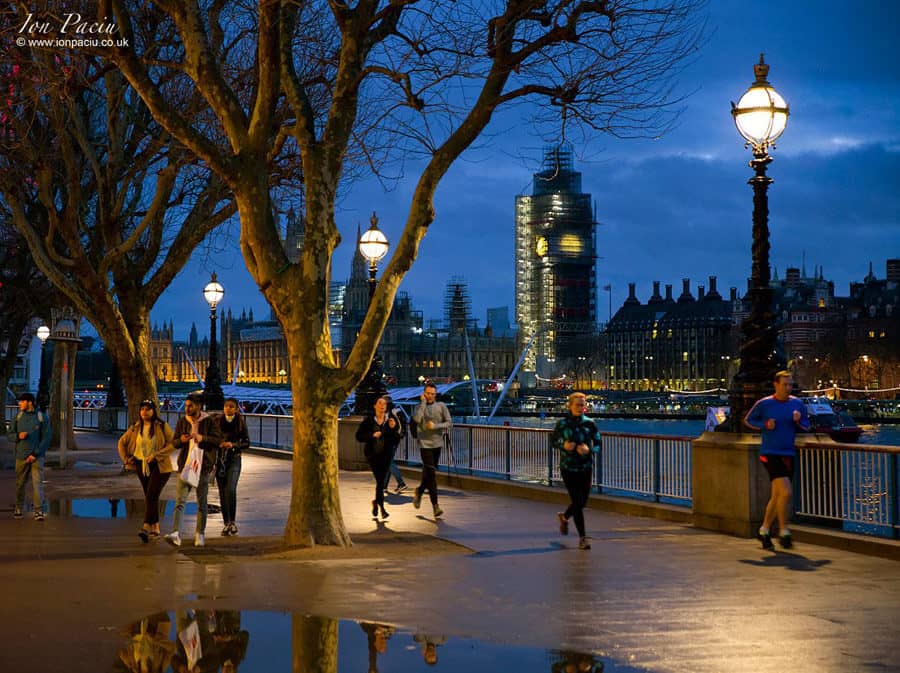
(c) Ion Paciu
It’s not often you’ll find rain without puddles. These small pools of water act like mirrors reflecting the world around them, and you can use this to your advantage to create interesting images of your subject.
You can capture plain images of a flat reflection in the puddle, or you can drop something in the puddle to create ripples just before you take the image to distort it and create something completely different.
Focus on Water Droplets
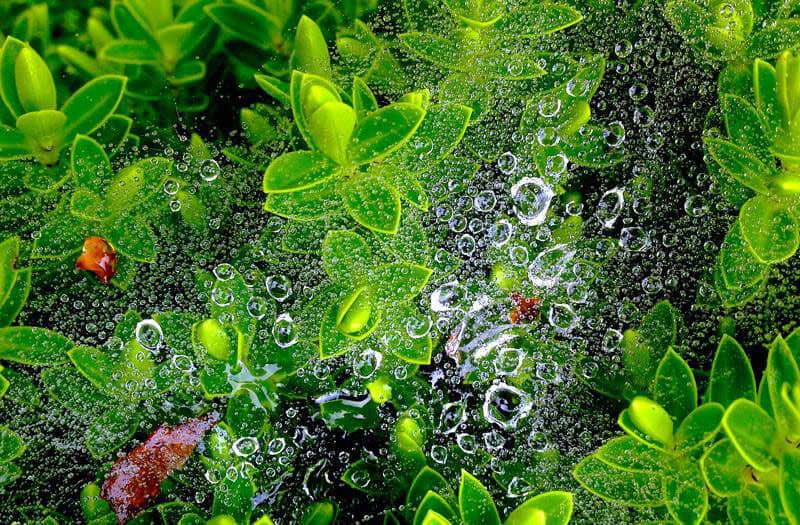
(c) Nageen Nasir
After the rain has stopped there will be a period where water droplets will still hug plants and other surfaces. With the rain stopped, you won’t have to worry about getting wet while you take advantage of these water droplets. Leaves and spider webs are great places to start for capturing images focused on water drops.
Keep an eye out for umbrellas!
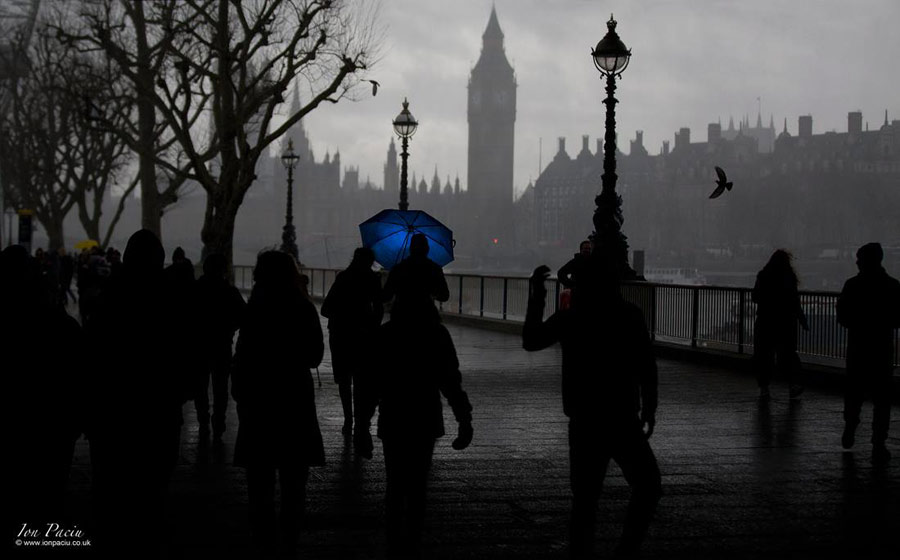
(c) Ion Paciu
On most rainy days, you’ll find no shortage of people carrying umbrellas. Most will carry dark coloured umbrellas, which you can use to create sombre and moody images.
But occasionally you’ll see a bright and vibrant umbrella that stands out among the rest. These can be a fantastic focal point for your photographs because they provide so much contrast with the other umbrellas around them.
A world reflected
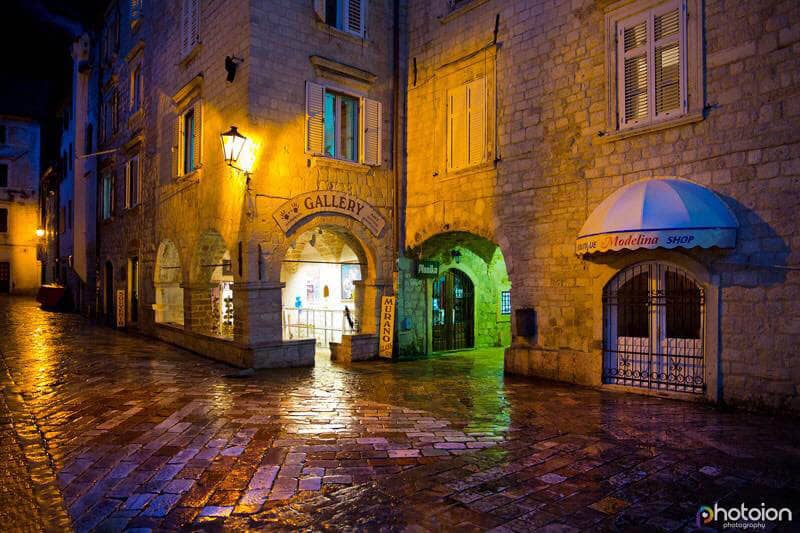
(c) Ion Paciu
During rain, almost everything becomes a reflective surface to some degree, and you can use this to add more life to your image. A photograph of a road might normally seem flat and dark, but during or after the rain, when the road is wet, it will reflect light sources and add new light and life to the scene.
These reflections allow you to capture images that are much lighter than you would otherwise be able to capture, especially during the night hours.
Make a splash with Rain Photography
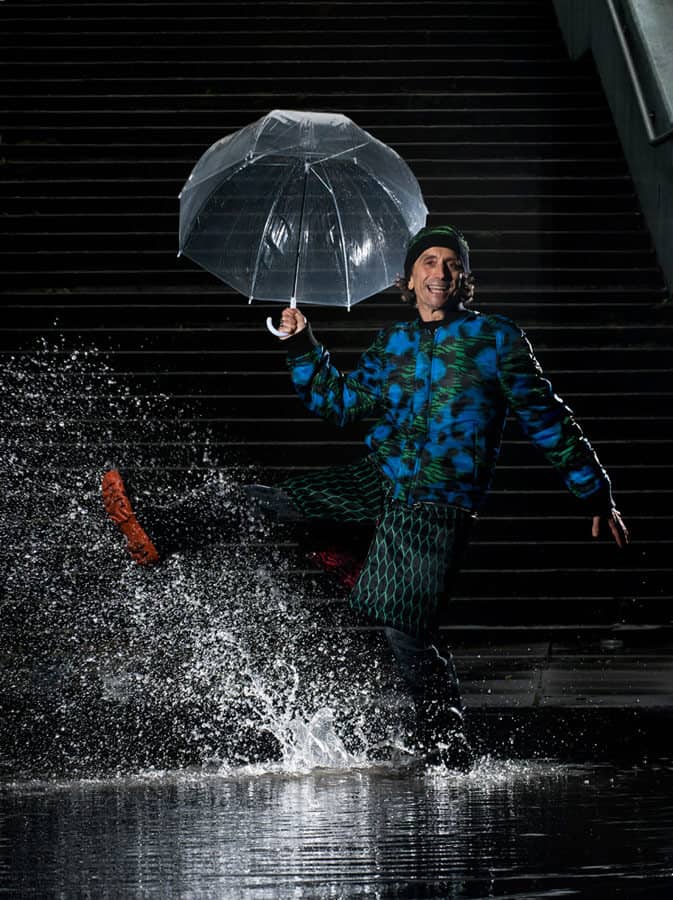
Taken by our tutor (c) Chris Chan on our speedlite photography workshop
The best photos pause moments of action, and capturing splashes from rain can get you some unique action photographs. There are many ways to get better action photos, including raising your shutter speed to 1/1000 or more or using a flashgun to freeze a splash!
We hope you’ve found these tips useful and they’ve given you the confidence not to run for cover the next time rainclouds appear during a shoot.

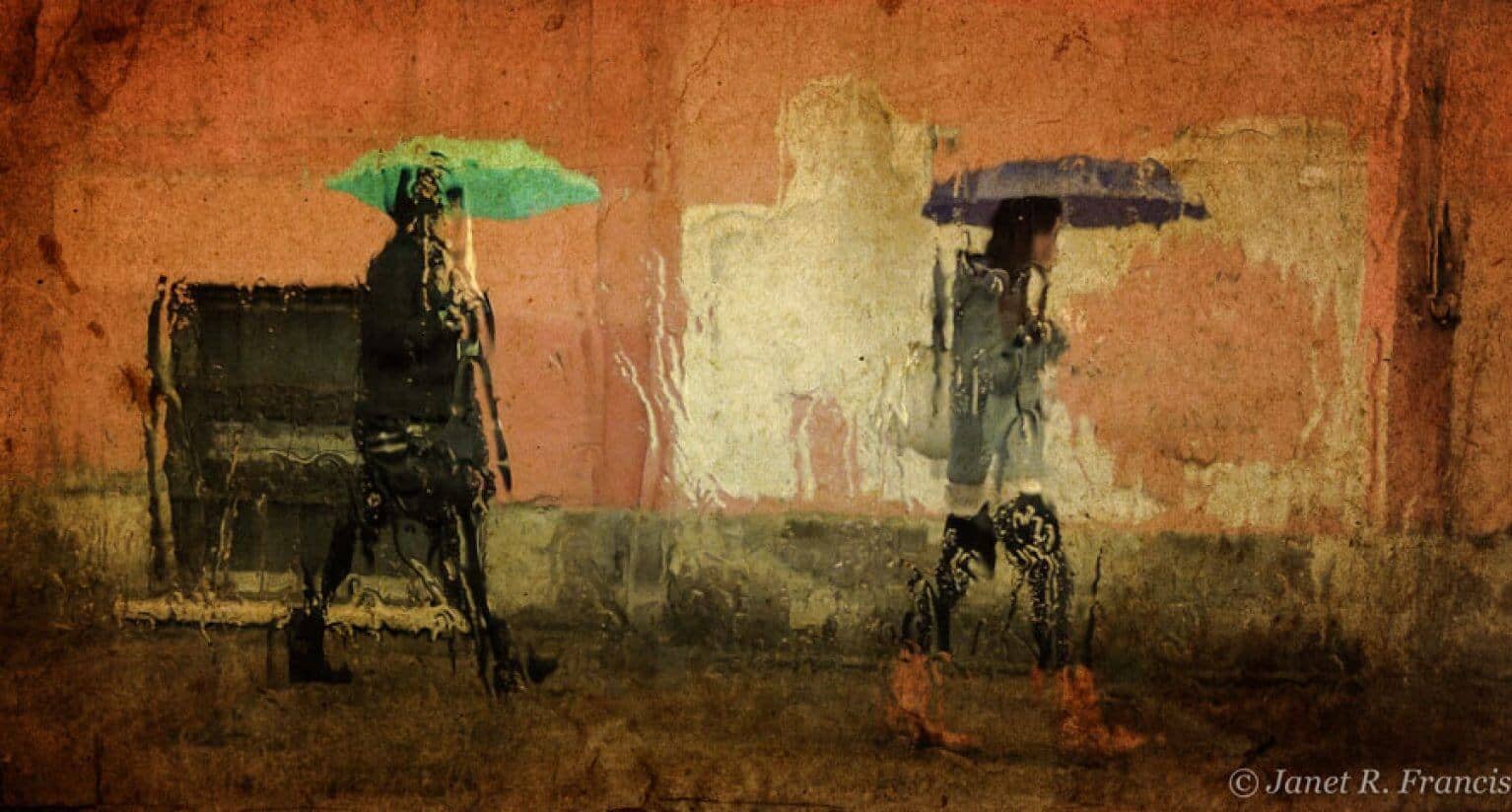

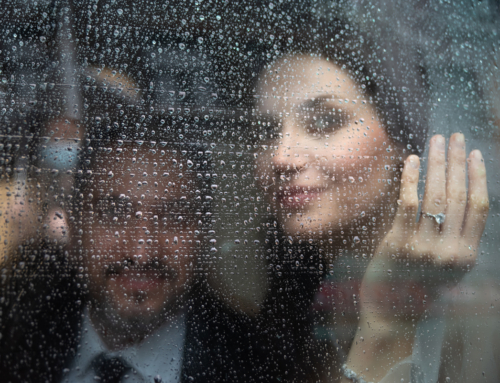
Leave A Comment